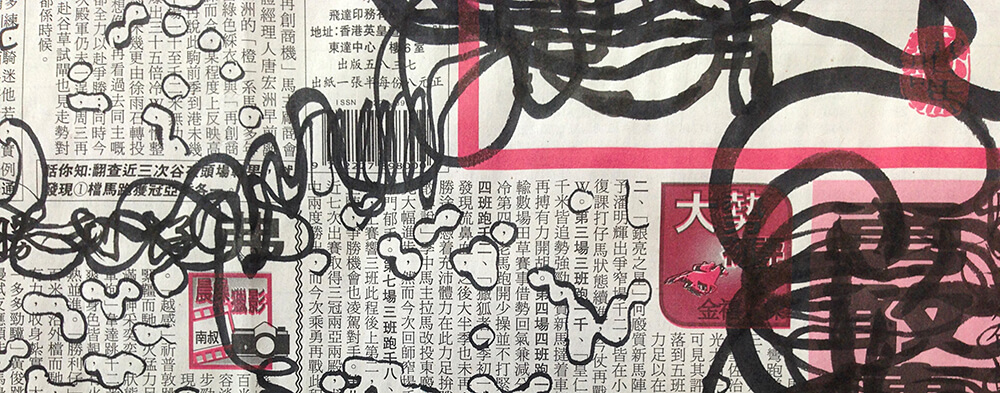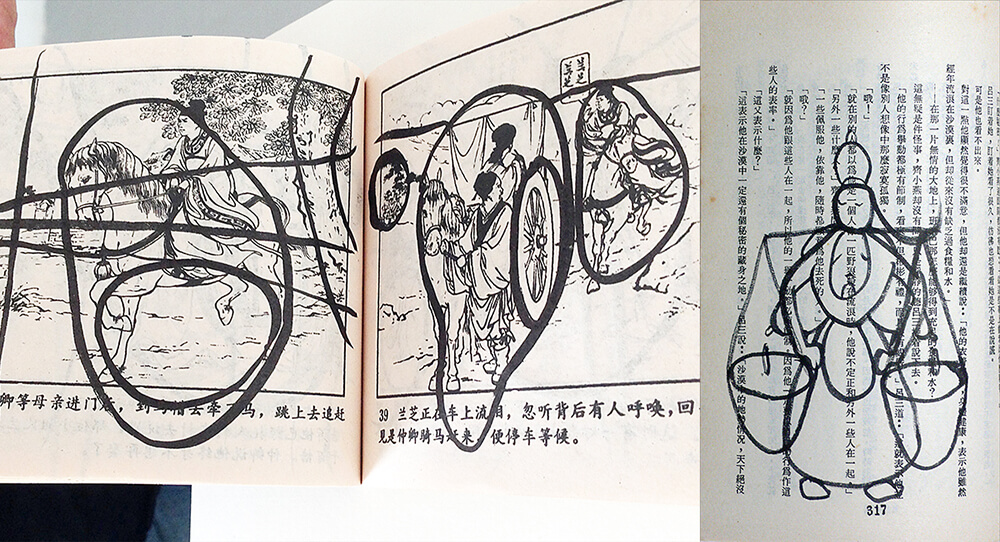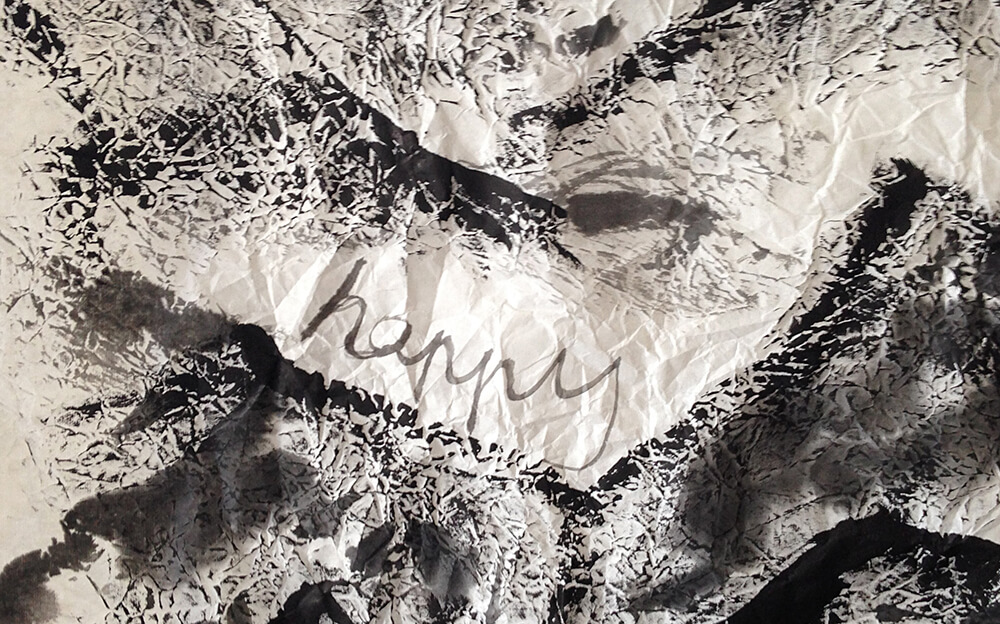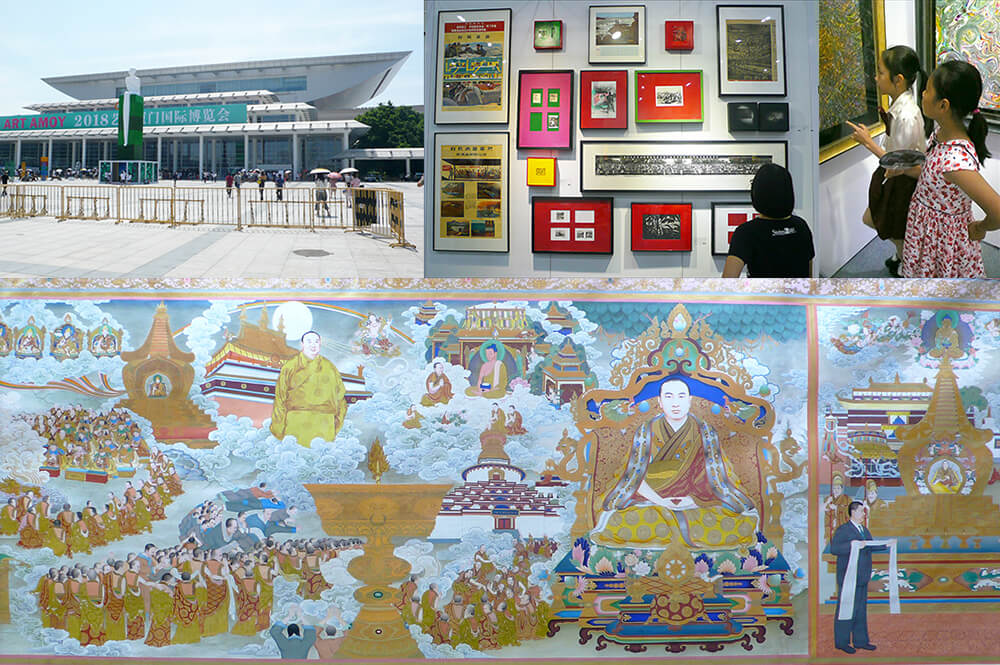Drawing, art fair
The second half of May I stayed in a lot. I had come back from Hong Kong with a bronchitis, maybe caught in the crowded and cold metro. And now I needed to put on the airco at home too, at least when I was busy, because without it it was too hot to paint. Still, bit by bit things started to happen in my work.
I drew and painted on a variety of supports: mainly on the big rice papers, but also in a small drawing book, on tiny graphic novels found in Qianzhou, on the pages of a kung foo novel from Hong Kong, and on Chinese newspapers.

Most of the Hong Kong texts are printed vertically, which is the traditional way, while the Chinese use the new simplified characters printed horizontally.

In the lessons with Sheng lao shī we only worked on small sizes. Now the larger papers obliged me to work vertically, and I was struggling with the positions of the brush on the hanging and highly absorbent rice paper. I learnt partly to control and partly to accept unchosen flows of ink and paint, and to benefit from it. It starte to lead me not only to surprising forms but also to new content. In some works I combined painting with text; something I avoided for years, and am still not sure if it will be continued, but I welcomed the new images.

The only outings these days were to see some graduation shows in the nearby art college. Ma Wen, another professor I had met at the university, invited me to visit the exhibition of his students and generously lead me around. It was a mix of art and design students, and there were some very interesting works, especially videos. I also saw the presentation of Muse’s classical Chinese painting class, in which her scroll of the university buildings really stood out.
The last weekend of May colleague and friend Ton Kraayeveld arrived for a two weeks stay, and together we visited the art fair Art Amoy (former name of Xiamen). There were many visitors, the majority quite young; some even as young as the girls on the photo underneath; promising for the Chinese art market ;-). There was a mix of traditional and contemporary Chinese art. The most interesting I found a series of photo’s, collages and paintings which together tell a story of people in China under Mao. Another stand that caught my attention was from a foundation based in Shenzhen where traditional painters from Tibet produce and sell their works. Amongst other pieces it showcased an enormous painting, not for sale, in a meticulous hyper social-realist style, that consisted of many segments, each representing a different era in which a different leader visits Tibet, surrounded by festivities and Buddhist gods.
